21801-79-6
| Name | 2-Methylimidazo[1,2-a]pyridine-3-carboxylic acid |
|---|---|
| Synonyms |
Imidazo[1,2-a]pyridine-3-carboxylic acid, 2-methyl-
2-Methylimidazo[1,2-a]pyridine-3-carboxylic acid MFCD00244615 |
| Density | 1.4±0.1 g/cm3 |
|---|---|
| Boiling Point | 170ºC |
| Melting Point | 140ºC |
| Molecular Formula | C9H8N2O2 |
| Molecular Weight | 176.172 |
| Exact Mass | 176.058578 |
| PSA | 54.60000 |
| LogP | 1.90 |
| Index of Refraction | 1.653 |
Synonym: Section 2 - COMPOSITION, INFORMATION ON INGREDIENTS
Risk Phrases: 36/37/38 Section 3 - HAZARDS IDENTIFICATION EMERGENCY OVERVIEW
Irritating to eyes, respiratory system and skin. Potential Health Effects Eye: Causes eye irritation. Skin: Causes skin irritation. May be harmful if absorbed through the skin. Ingestion: May cause irritation of the digestive tract. May be harmful if swallowed. Inhalation: Causes respiratory tract irritation. May be harmful if inhaled. Chronic: Not available. Section 4 - FIRST AID MEASURES Eyes: Flush eyes with plenty of water for at least 15 minutes, occasionally lifting the upper and lower eyelids. Get medical aid. Skin: Get medical aid. Flush skin with plenty of water for at least 15 minutes while removing contaminated clothing and shoes. Ingestion: Get medical aid. Wash mouth out with water. Inhalation: Remove from exposure and move to fresh air immediately. If not breathing, give artificial respiration. If breathing is difficult, give oxygen. Get medical aid. Notes to Physician: Treat symptomatically and supportively. Section 5 - FIRE FIGHTING MEASURES General Information: As in any fire, wear a self-contained breathing apparatus in pressure-demand, MSHA/NIOSH (approved or equivalent), and full protective gear. Extinguishing Media: Use water spray, dry chemical, carbon dioxide, or chemical foam. Section 6 - ACCIDENTAL RELEASE MEASURES General Information: Use proper personal protective equipment as indicated in Section 8. Spills/Leaks: Vacuum or sweep up material and place into a suitable disposal container. Section 7 - HANDLING and STORAGE Handling: Avoid breathing dust, vapor, mist, or gas. Avoid contact with skin and eyes. Storage: Store in a cool, dry place. Store in a tightly closed container. Section 8 - EXPOSURE CONTROLS, PERSONAL PROTECTION Engineering Controls: Facilities storing or utilizing this material should be equipped with an eyewash facility and a safety shower. Use adequate ventilation to keep airborne concentrations low. Exposure Limits CAS# 21801-79-6: Personal Protective Equipment Eyes: Not available. Skin: Wear appropriate protective gloves to prevent skin exposure. Clothing: Wear appropriate protective clothing to prevent skin exposure. Respirators: Follow the OSHA respirator regulations found in 29 CFR 1910.134 or European Standard EN 149. Use a NIOSH/MSHA or European Standard EN 149 approved respirator if exposure limits are exceeded or if irritation or other symptoms are experienced. Section 9 - PHYSICAL AND CHEMICAL PROPERTIES Physical State: Solid Color: off-white Odor: Not available. pH: Not available. Vapor Pressure: Not available. Viscosity: Not available. Boiling Point: Not available. Freezing/Melting Point: 177 - 179 deg C Autoignition Temperature: Not available. Flash Point: Not available. Explosion Limits, lower: Not available. Explosion Limits, upper: Not available. Decomposition Temperature: Solubility in water: Specific Gravity/Density: Molecular Formula: C9H8N2O2 Molecular Weight: 176.17 Section 10 - STABILITY AND REACTIVITY Chemical Stability: Not available. Conditions to Avoid: Incompatible materials. Incompatibilities with Other Materials: Strong oxidizing agents. Hazardous Decomposition Products: Nitrogen oxides, carbon monoxide, carbon dioxide. Hazardous Polymerization: Has not been reported Section 11 - TOXICOLOGICAL INFORMATION RTECS#: CAS# 21801-79-6: NJ5495000 LD50/LC50: Not available. Carcinogenicity: 2-Methylimidazo[1,2-a]pyridine-3-carboxylic acid - Not listed by ACGIH, IARC, or NTP. Other: See actual entry in RTECS for complete information. Section 12 - ECOLOGICAL INFORMATION Section 13 - DISPOSAL CONSIDERATIONS Dispose of in a manner consistent with federal, state, and local regulations. Section 14 - TRANSPORT INFORMATION IATA No information available. IMO No information available. RID/ADR No information available. Section 15 - REGULATORY INFORMATION European/International Regulations European Labeling in Accordance with EC Directives Hazard Symbols: XI Risk Phrases: R 36/37/38 Irritating to eyes, respiratory system and skin. Safety Phrases: S 26 In case of contact with eyes, rinse immediately with plenty of water and seek medical advice. S 37/39 Wear suitable gloves and eye/face protection. WGK (Water Danger/Protection) CAS# 21801-79-6: No information available. Canada None of the chemicals in this product are listed on the DSL/NDSL list. CAS# 21801-79-6 is not listed on Canada's Ingredient Disclosure List. US FEDERAL TSCA CAS# 21801-79-6 is not listed on the TSCA inventory. It is for research and development use only. SECTION 16 - ADDITIONAL INFORMATION N/A |
CHEMICAL IDENTIFICATION
HEALTH HAZARD DATAACUTE TOXICITY DATA
|
| Hazard Codes | Xi: Irritant; |
|---|---|
| Risk Phrases | R36/37/38 |
| Safety Phrases | 26-36/37/39 |
| HS Code | 2933990090 |
|
~45% 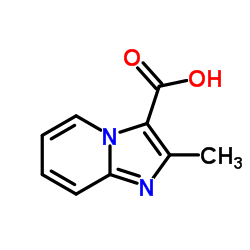
21801-79-6 |
| Literature: MILLENNIUM PHARMACEUTICALS, INC.; TAKEDA PHARMACEUTICAL COMPANY LIMITED; BANNO, Hiroshi; HIROSE, Masaaki; KURASAWA, Osamu; LANGSTON, Steven, P.; MIZUTANI, Hirotake; SHI, Zhan; VISIERS, Irache; VOS, Tricia, J.; VYSKOCIL, Stepan Patent: WO2010/90716 A1, 2010 ; Location in patent: Page/Page column 321 ; |
|
~96% 
21801-79-6 |
| Literature: Kuemmerle, Arthur E.; Schmitt, Martine; Cardozo, Suzana V. S.; Lugnier, Claire; Villa, Pascal; Lopes, Alexandra B.; Romeiro, Nelilma C.; Justiniano, Helene; Martins, Marco A.; Fraga, Carlos A. M.; Bourguignon, Jean-Jacques; Barreiro, Eliezer J. Journal of Medicinal Chemistry, 2012 , vol. 55, # 17 p. 7525 - 7545 |
|
~% 
21801-79-6 |
| Literature: Journal of the American Chemical Society, , vol. 76, p. 1845 |
|
~% 
21801-79-6 |
| Literature: Journal of the American Chemical Society, , vol. 76, p. 1845 |
|
~% 
21801-79-6 |
| Literature: Bioorganic and Medicinal Chemistry Letters, , vol. 22, # 5 p. 1870 - 1873 |
|
~% 
21801-79-6 |
| Literature: Journal of Chemical Research, , vol. 35, # 4 p. 243 - 245 |
| Precursor 6 | |
|---|---|
| DownStream 2 | |
| HS Code | 2933990090 |
|---|---|
| Summary | 2933990090. heterocyclic compounds with nitrogen hetero-atom(s) only. VAT:17.0%. Tax rebate rate:13.0%. . MFN tariff:6.5%. General tariff:20.0% |
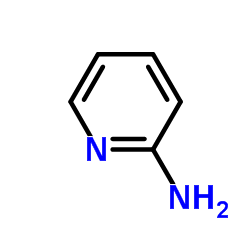
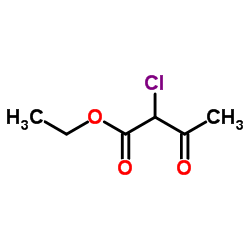
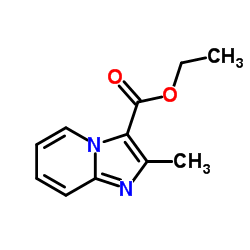
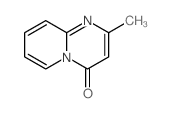

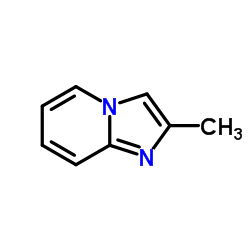

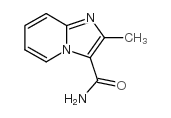
![Piperidine, 1-[(2-methylimidazo[1,2-a]pyridin-3-yl)carbonyl]- (9CI) structure](https://image.chemsrc.com/caspic/206/570361-36-3.png)